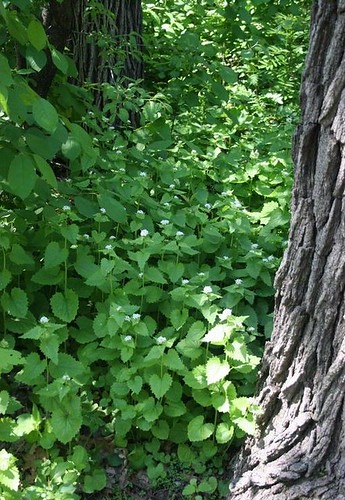
Year three of the “Garlic Mustard Challenge” produced a bumper crop, not for hot dog relish, but bags of the non-native invasive species garlic mustard. The goals of this challenge and the weed pull are not simply in eradicating the invasive garlic mustard plant, but also in educating and inspiring individuals to get out and enjoy our national forests and grasslands.
Volunteer ages ranged from the experienced weed pullers all the way down to first time weed-avengers. When volunteers attend a sponsored pull, they are given the tools to participate and an educational talk about the invasive species.
A recent funding opportunity, a TAPESTRY Grant for Science Teachers, has opened the door for an educational project in the Northeast region. Elementary students will participate in a two year scientific inquiry in which they will learn about non-native invasive plant species and aid in the development of plans to address future management issues. Young and imaginative minds will be asked to think of ways to put the pulled herbs to better use. After working with scientists and trained adult volunteers, it is the hope these students will have productive and creative ideas for a marketable use of garlic mustard.
The total amount of garlic mustard pulled and the volunteer hours for the last three years has grown significantly each year; the 2011 challenge reached a total of more than 73,810 pounds pulled and approximately 7,950 volunteer hours contributed. The success of this program is reflected by the partnerships and public participation. The education and excitement surrounding these challenges will only help make management plans for invasive species programs that much more effective.
This non-native invasive species is not isolated to the Northeast area, so people from all over are welcome to get involved. Forest Service Ecologist Cynthia Sandeno is expecting next year to break records again. Contact the Monongahela National Forest to find out more or to organize a pull in your area.
